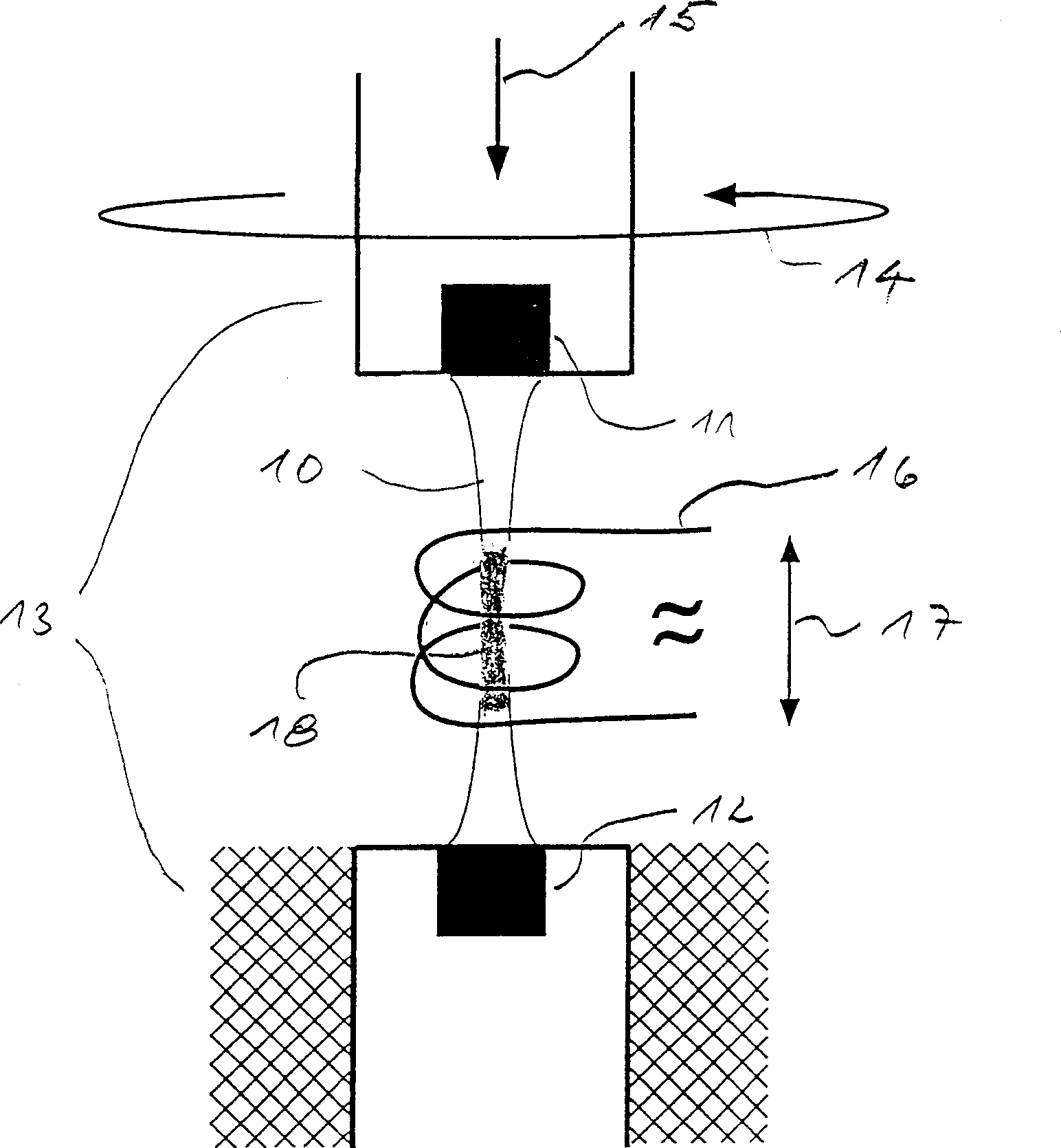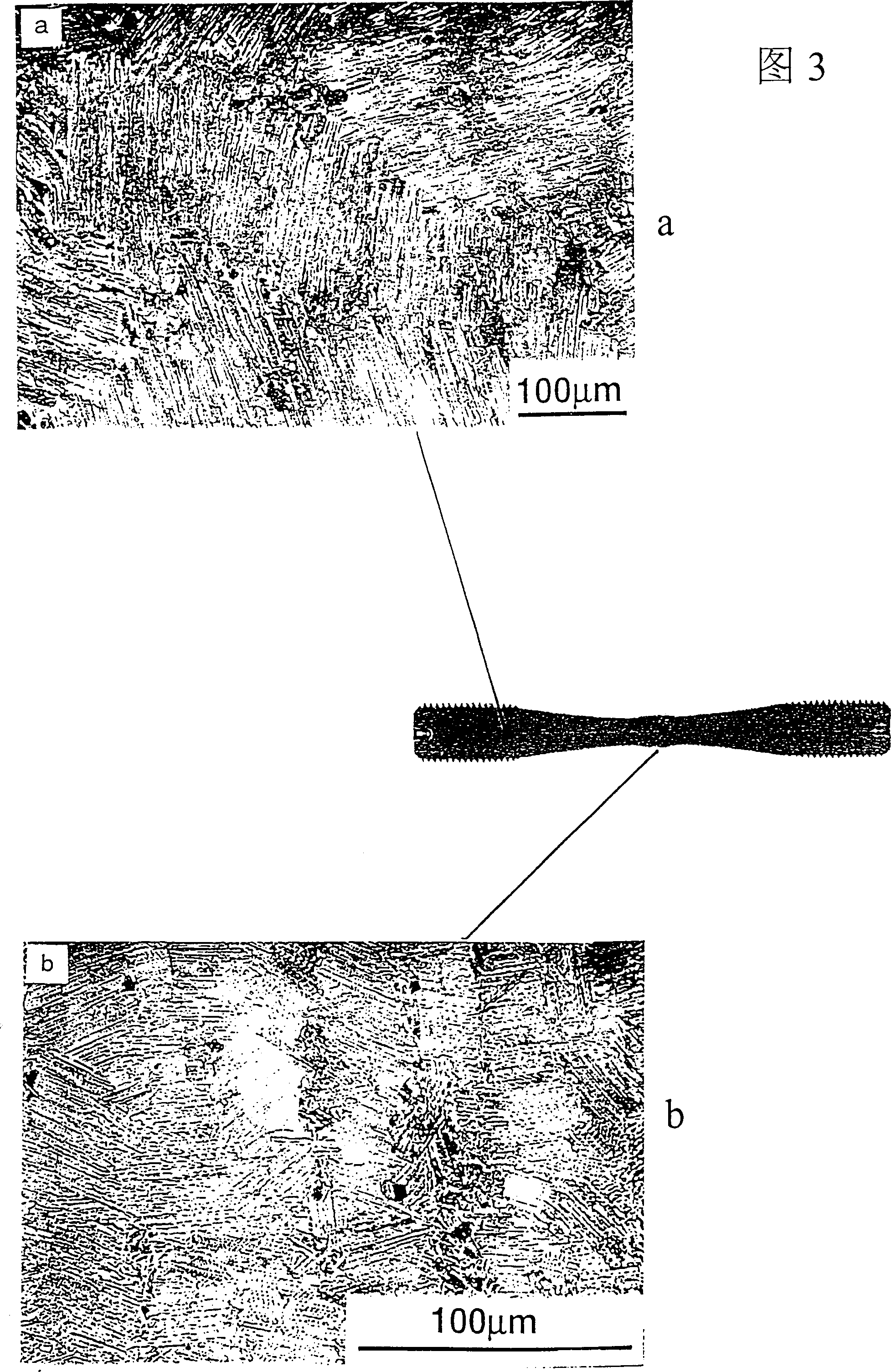Method for strengthening metal material tissue and metal blank
A technology of metal materials and blanks, which is applied in the field of metal material processing, can solve the problems of labor cost, high temperature, etc., and achieve the effect of improving the structure and improving the structure strengthening
- Summary
- Abstract
- Description
- Claims
- Application Information
AI Technical Summary
Problems solved by technology
Method used
Image
Examples
Embodiment Construction
[0032] The method described here was tested in the laboratory field on a TiAl alloy of composition (in atomic percent) Ti-47Al-3.7(Nb, Cr, Mn, Si)-0.5B. The test is carried out in air. For this purpose, the test piece provided with the threaded head is inserted into a compression device, where, in order to distort the test piece, the test piece supports can be rotated relative to each other ( figure 1 ). These test pieces can be heated to different deformation temperatures between 1000 and 1100 °C by means of induction coils. The temperature of the test piece is measured by a thermocouple. Due to the geometrical configuration of the coils, the hot specimen region has a length of approximately 6 mm, which is considered the effective specimen length for analysis. After reaching the desired temperature, the test piece is firstly subjected to a constant pressure in the direction of compression, said pressure being between 10 and 50 MPa. Here, since the casting structure is ver...
PUM
| Property | Measurement | Unit |
|---|---|---|
| particle size | aaaaa | aaaaa |
Abstract
Description
Claims
Application Information
 Login to View More
Login to View More - R&D
- Intellectual Property
- Life Sciences
- Materials
- Tech Scout
- Unparalleled Data Quality
- Higher Quality Content
- 60% Fewer Hallucinations
Browse by: Latest US Patents, China's latest patents, Technical Efficacy Thesaurus, Application Domain, Technology Topic, Popular Technical Reports.
© 2025 PatSnap. All rights reserved.Legal|Privacy policy|Modern Slavery Act Transparency Statement|Sitemap|About US| Contact US: help@patsnap.com



